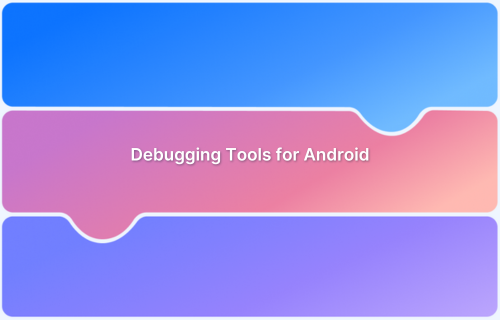Debugging Android Applications Effectively: Tips and Tricks for Faster Development

Debugging: the unsung hero of Android development. Let’s face it, no app is perfect on the first try. But knowing how to debug effectively can save you countless hours and frustration. In this guide, we’ll explore essential debugging techniques and tools in Android Studio, helping you become a debugging master.
Why is Effective Debugging Crucial for Android Developers?
Debugging isn’t just about fixing errors; it’s about understanding your code, identifying performance bottlenecks, and ensuring your app delivers a smooth user experience. Mastering debugging tools and techniques can significantly speed up your development process.
1. Using Logcat: Your App’s Black Box Recorder
Logcat is your window into what’s happening inside your Android app. It records system messages, errors, and custom logs that you add to your code.
- Viewing Logs: The Real-Time Feed:
- Logcat displays a continuous stream of messages.
- What’s happening: Android Studio collects logs from your device or emulator and shows them in the Logcat window.
- Filtering Logs: Finding the Needle in a Haystack:
- Use filters to narrow down logs by tag, level (Verbose, Debug, Info, Warn, Error), or package name.
- Why use it? It helps you focus on relevant messages.
- Custom Logs: Leaving Breadcrumbs:
- Use
Log.d(),Log.e(),Log.i(), etc., to print custom logs at strategic points in your code. - Tip: Add descriptive tags to your logs for easier filtering.
- Use
2. Breakpoints and Debugger: Pausing Time and Inspecting Variables
The debugger allows you to pause your app’s execution, inspect variables, and step through your code line by line.
- Setting Breakpoints: Freezing the Moment:
- Click in the gutter (the area to the left of your code) to set breakpoints.
- What’s happening: When your app reaches a breakpoint, it pauses execution.
- Running in Debug Mode: Stepping Through Code:
- Click the “Debug” button (the bug icon) to run your app in debug mode.
- Tip: Use the debugger controls (Step Over, Step Into, Step Out) to navigate through your code.
- Inspecting Variables: Peeking Inside the Black Box:
- Use the “Variables” pane to inspect the values of variables at each step.
- Why use it? It helps you understand the state of your app at any given moment.
3. Android Studio Profiler: Understanding Performance Bottlenecks
The Android Studio Profiler provides tools to analyze your app’s performance, including CPU usage, memory usage, and network activity.
- CPU Profiler: Identifying Performance Hogs:
- Analyze CPU usage to identify performance bottlenecks.
- What’s happening: The profiler shows you how much CPU time your app is using.
- Memory Profiler: Detecting Memory Leaks:
- Detect memory leaks and optimize memory usage.
- Tip: Look for increasing memory usage over time.
- Network Profiler: Monitoring Network Requests:
- Monitor network requests and responses to optimize network performance.
- What’s happening: The profiler shows you the data being sent and received by your app.
4. Common Debugging Tips: Strategies for Success
- Reproduce the Issue: Consistency is Key:
- Try to reproduce the bug consistently to understand its cause.
- Tip: Write down the steps to reproduce the issue.
- Isolate the Problem: Divide and Conquer:
- Narrow down the code that’s causing the issue by isolating components.
- Tip: Comment out code to see if the problem persists.
- Use Descriptive Logs: Telling a Story:
- Provide context in your log messages to make them more helpful.
- Tip: Include variable values and relevant information.
Frequently Asked Questions (FAQ):
- Q: How do I filter Logcat to see only my app’s logs?
- A: Use the package name filter.
- Q: What’s the difference between “Step Over” and “Step Into” in the debugger?
- A: “Step Over” executes the current line and moves to the next, while “Step Into” enters a function.
- Q: How do I detect memory leaks using the Memory Profiler?
- A: Look for increasing memory usage over time and use the “Heap Dump” feature.
By mastering these debugging techniques, you’ll become a more efficient and effective Android developer. Happy debugging!

 Never miss a story from us, subscribe to our newsletter
Never miss a story from us, subscribe to our newsletter